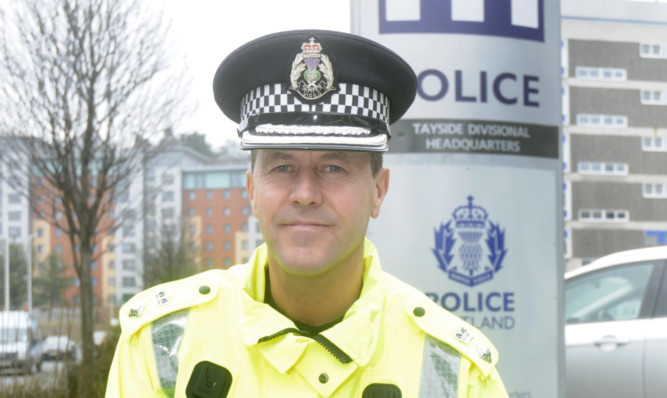Police Scotland restructuring will see Dundee’s north and south commands merged into one.
The move is part of changes to Tayside Division which the force says is aimed at making more officers available on the frontline of city crime.
A new shift pattern has also been introduced for frontline uniformed officers which, Police Scotland claim, will strengthen policing across the area.
The merger follows a review of the effectiveness of dividing the city and it was decided that a single area of command would result in more efficient operational policing and management.
Despite the change Dundee will continue to have two chief inspectors, formerly in charge of the city’s north and south, who will now be responsible for day to day operational policing and overseeing partnership working, community engagement and community safety issues.
There will still only be one chief inspector heading up Angus area and another for Perth and Kinross.
A Police Scotland spokeswoman said the restructure and shift pattern change will provide a greater number of available frontline officers at times of peak demand and a larger proportion of frontline uniformed officers within community policing teams, which will consist of a sergeant and constables.
A police spokeswoman said: “Officers in community policing teams will continue to respond to more routine calls and incidents that relate to ongoing issues in local communities and will be supported by response officers who will attend more urgent calls for service.
“Community policing teams will work closely with our partners to tackle arising issues and problems in particular areas.
“The changes to the current shift pattern for officers will mean more resources are available for local community policing and will ensure that the optimum numbers of officers are on duty at the right time, as well as improving the work-life balance for police officers.”
Chief Superintendent of Tayside Division, Eddie Smith said: “Local policing is at the heart of what we do and these proposals aim to strengthen our ties to our communities and improve our service delivery to the public that we serve. There will not be and has not been a reduction in the number of officers … as a result of these changes.
“These changes are about ensuring we have officers in the right place at the right time to keep people safe.”
